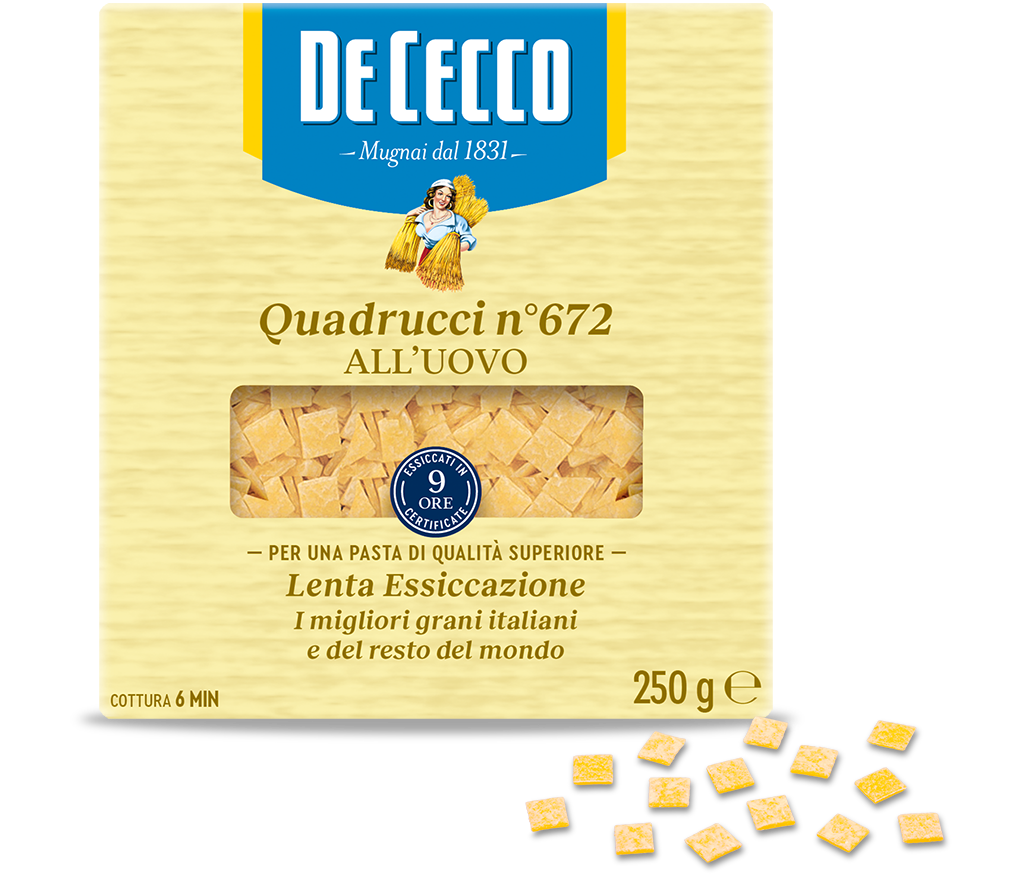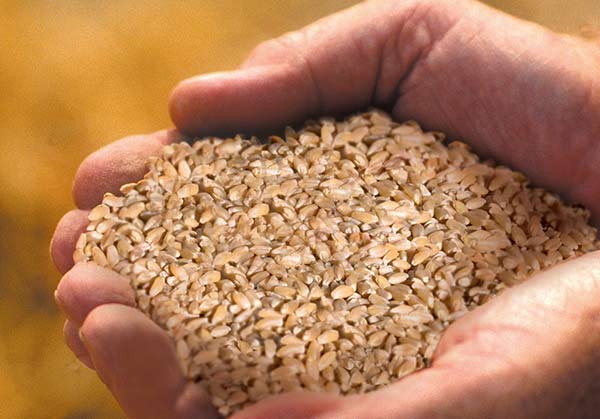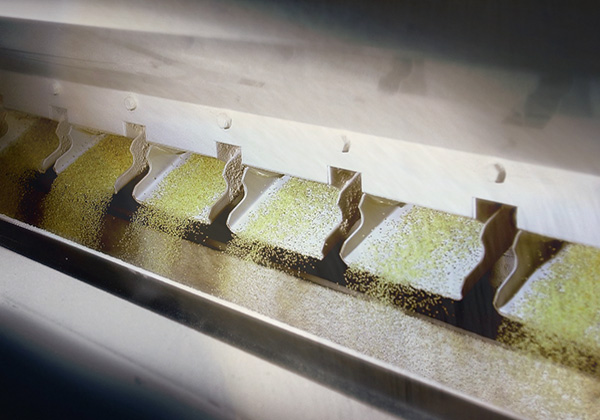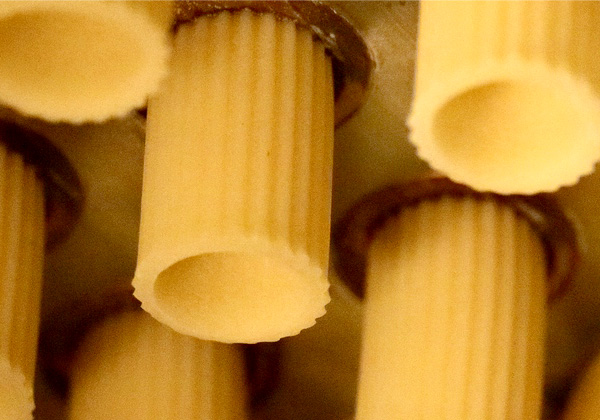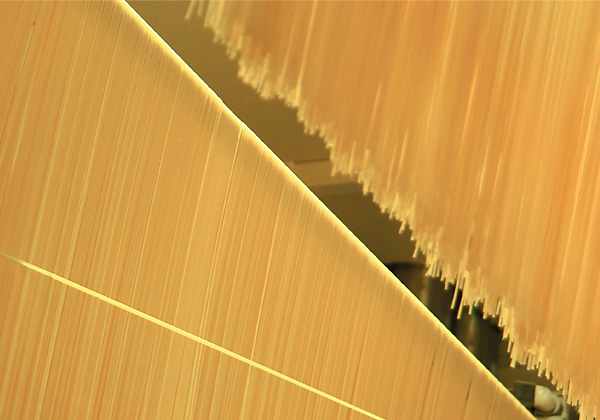Lasagnette n° 302 all'uovo
Lasagnette are consumed all over Italy and are part of the long, flat pasta family.
Their shape is particularly suited to the preparation of recipes based on tomato sauce with aromatic herbs or meat-based sauces.
They also go really well with spicy condiments or seafood sauces.
They are part of the culinary traditional in the Liguria region and are excellent for the preparation of first courses based on pesto.
Available in 500g pack.s
- Cooking time: 8 min
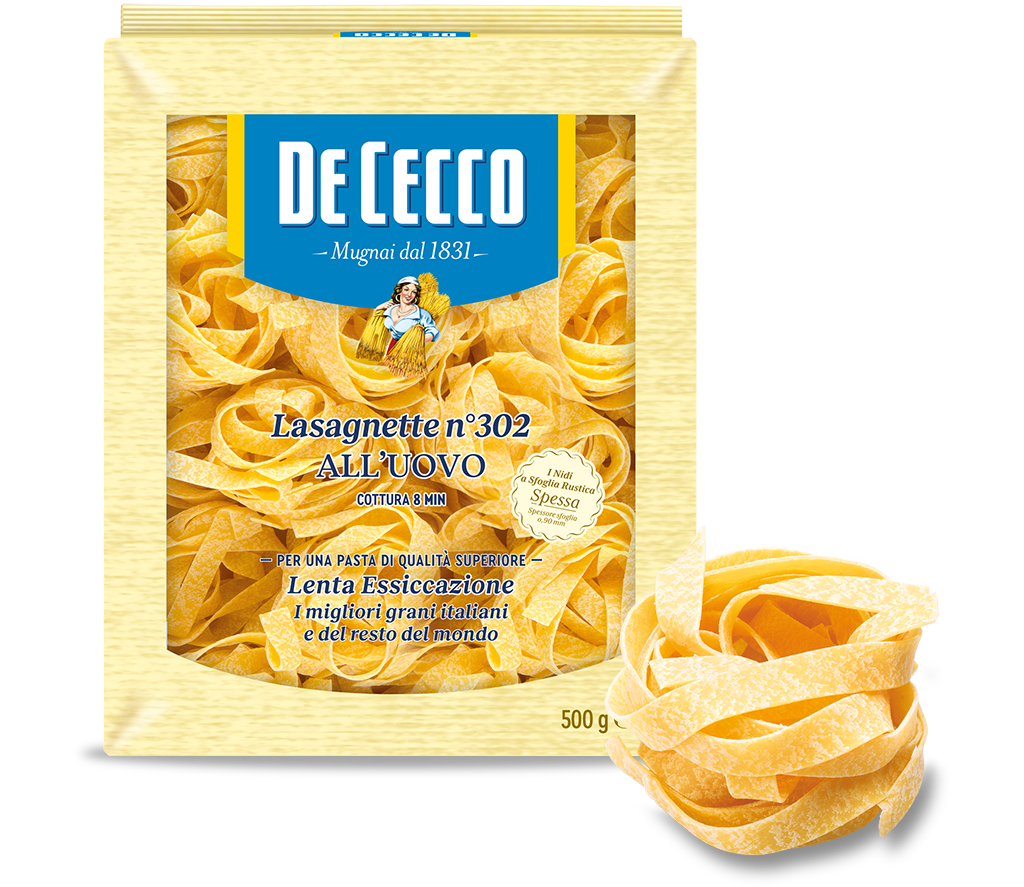
Our method
Quadrucci n° 672 all'uovo
Quadrucci (little squares) belong to the minute pasta family to be cooked in broth.
This is a classic pasta made from leftovers and was usually created, as in the case of maltagliati, from the pasta that was left over from making fettuccine on festive occasions.
This pasta is especially good for preparing clear soups such as broths or consommé, enhanced with croutons or vegetables cut in julienne strips.
This pasta can also be used in thick creamy or velvety soups.
Available in 250g packs
